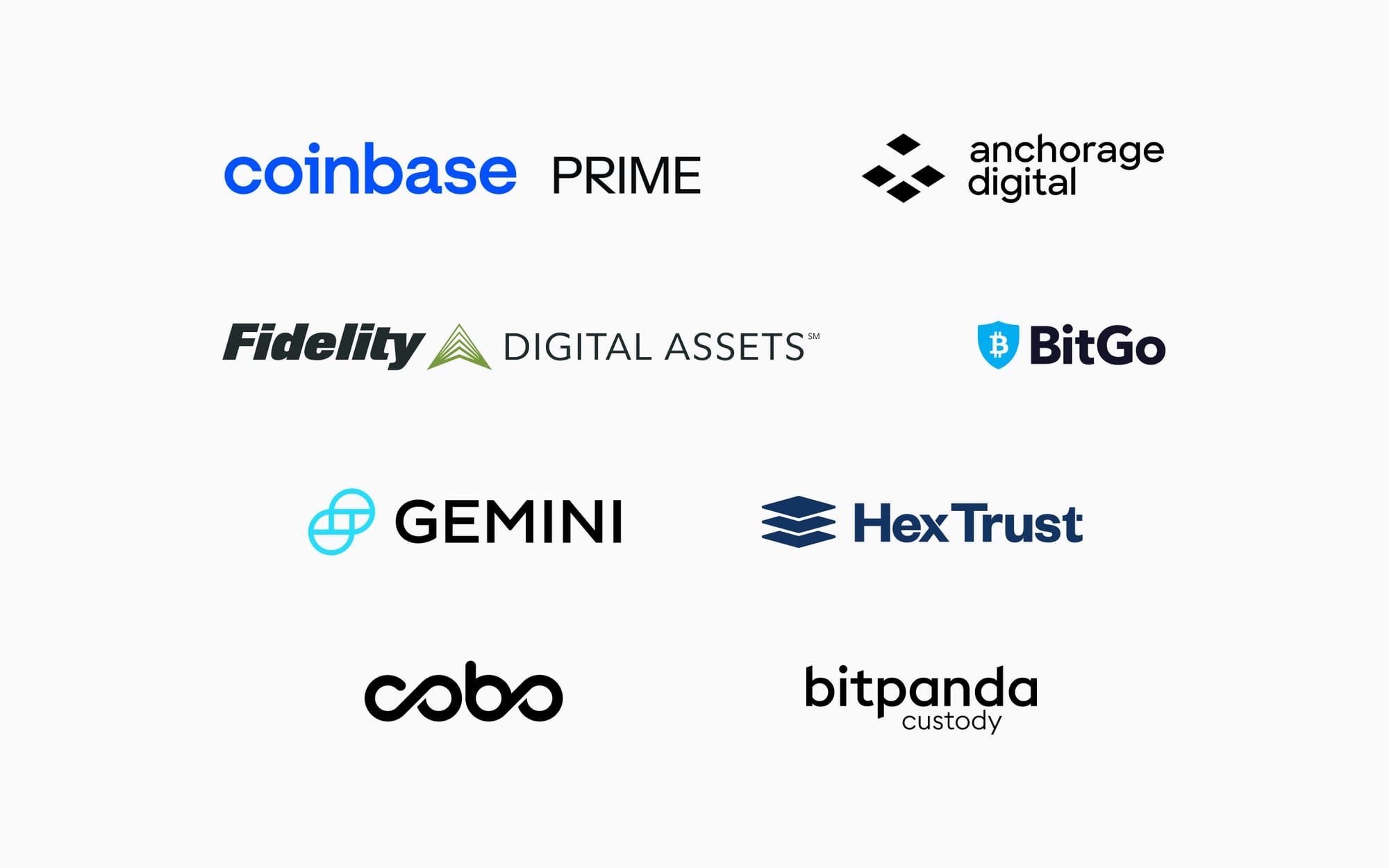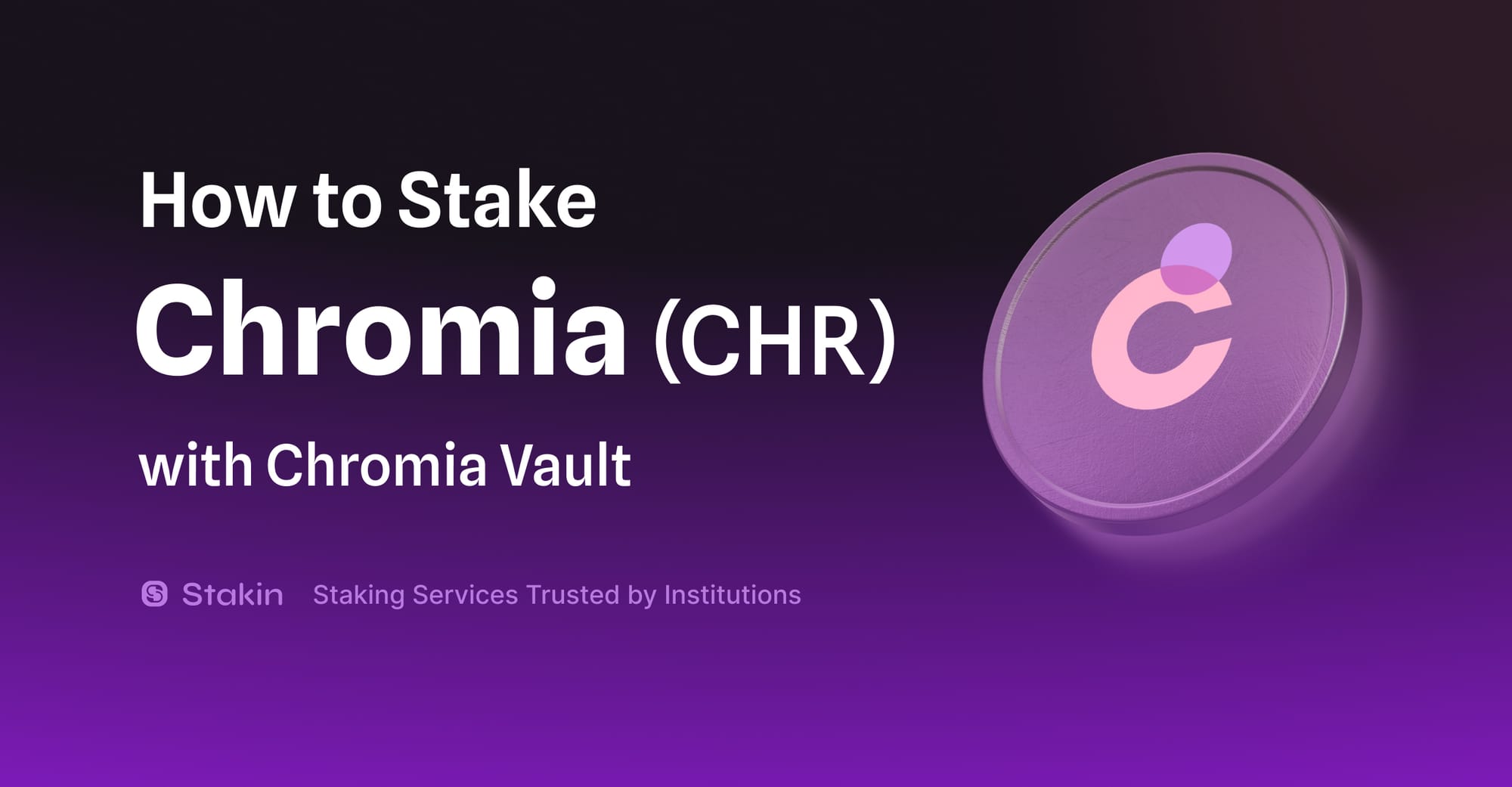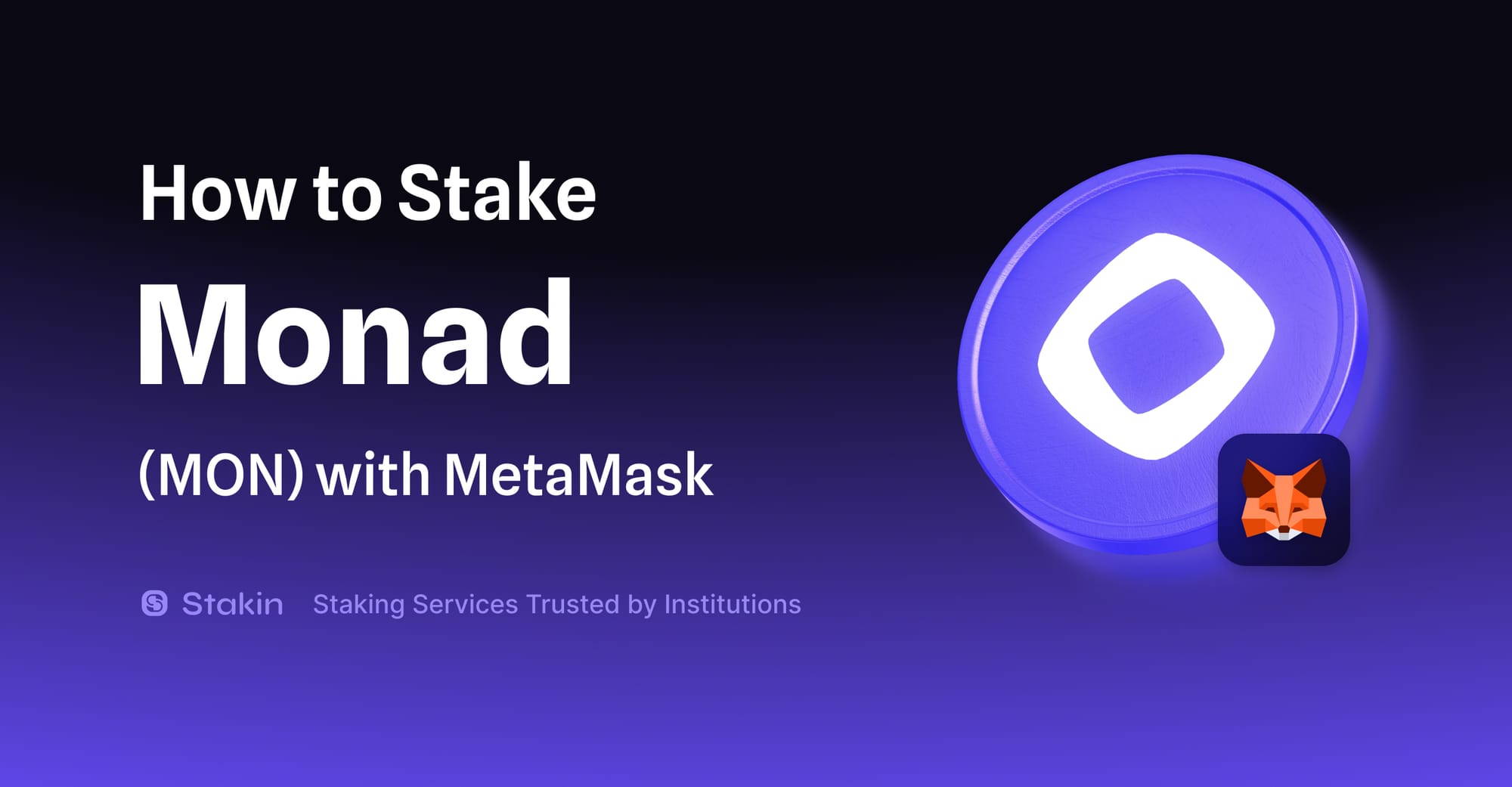In the rapidly-evolving cryptocurrency and digital asset landscape, custody solutions stand as a critical bridge between the world of traditional finance and the cryptocurrency ecosystem. As the larger cryptocurrency market has matured and this bridge has become increasingly important, both regulated licensed custodians and non-custodial technology storage solution providers have emerged to meet the evolving needs of institutional and retail investors.
As another intriguing year in the ongoing history of cryptocurrency and blockchain technology dawns, let's take a look at the current state of cryptocurrency custody in 2025, the key players involved, and why cryptocurrency custody solutions will be one of the most important topics the year ahead has to offer...
Understanding the Custody Landscape
Cryptocurrency custody solutions represent a critical bridge between traditional finance and digital assets, with regulated custodians representing a key cornerstone of the arch. As institutional adoption of digital assets has accelerated, the demand for sophisticated custody solutions has evolved from simple storage offerings to a comprehensive suite of services. This stable of custody solutions mirrors the established structures of the traditional finance world while embracing the unique opportunities offered by blockchain technology and cryptocurrencies.
Regulated custodians form the backbone of institutional digital asset adoption, providing the secure, compliant, and integrated services required by both traditional financial institutions and sophisticated digital asset investors. These institutions must balance the innovative nature of digital assets with the strict requirements of traditional finance, implementing robust security measures while maintaining the flexibility needed for efficient asset management.
The ongoing evolution of regulated custody solutions reflects the industry's maturation, particularly in how these entities approach risk management and operational security. Modern custody solutions must address multiple challenges simultaneously: protecting assets from technological threats, ensuring regulatory compliance across jurisdictions, and providing the seamless service integration that institutional clients expect. This has led to the development of sophisticated hybrid systems that combine cold storage security with hot wallet functionality, allowing institutions to maintain both security and operational efficiency.
The distinction between regulated custodians and technology providers has become increasingly important as the market matures. While technology providers offer valuable infrastructure and security solutions, regulated custodians provide the comprehensive oversight and risk management framework necessary for institutional adoption. This includes not only the technical aspects of digital asset storage but also the crucial elements of compliance, insurance, and integration with existing financial systems.
Regulatory Frameworks
The regulatory landscape for cryptocurrency custody spans multiple jurisdictions globally, with three key regions leading the development of today’s regulatory frameworks. These jurisdictions have emerged as leaders not just due to their market size, but because of their comprehensive approach to digital asset regulation and their influence on global financial standards.
USA
In the United States, oversight comes from multiple regulatory bodies including the SEC and CFTC, with requirements spanning the federal and state levels. The U.S. framework is particularly significant due to the size of its financial markets and its influence on global regulatory standards. The SEC has specifically noted that cryptocurrency exchanges do not automatically qualify as custodians, highlighting the importance of proper licensing and regulatory compliance. This distinction has become a model for other jurisdictions, emphasizing the need for specialized custody frameworks, rather than general cryptocurrency service provider regulations.
The state-level regulatory landscape in the US, particularly New York's BitLicense and trust company frameworks, has set important precedents for how digital asset custody can be regulated at a granular level. These frameworks have become reference points for other jurisdictions developing their own custody regulations, particularly in areas such as capital requirements, security standards, and operational protocols.
EU
The European Union's Markets in Crypto-Assets (MiCA) regulation represents a significant step toward regulatory harmonization across the EU member states. This framework aims to create standardized requirements for cryptocurrency custody providers operating within the EU. The significance of MiCA extends beyond Europe, as it represents the first comprehensive attempt to create a unified regulatory framework across multiple countries. This harmonization effort provides a potential blueprint for other regions considering multi-jurisdictional coordination of custody regulations.
Singapore
Singapore's Payment Services Act (PSA) provides a clear regulatory framework for cryptocurrency custody services, establishing the city-state as a key jurisdiction for digital asset services in Asia. The framework emphasizes technological risk management and customer protection while maintaining flexibility for innovation. Singapore's approach is particularly notable for its balance between robust oversight and technological adaptability, making it a model for emerging markets seeking to develop their own regulatory frameworks.
The prominence of these three jurisdictions stems from their different but complementary approaches to regulation. The U.S. provides a model for robust investor protection and institutional-grade requirements, the EU demonstrates how harmonization can work across multiple markets, and Singapore shows how innovation can be fostered within a clear regulatory framework. Together, they form the foundation of global custody regulation, influencing how other jurisdictions will approach this evolving sector moving forward.
Security and Operational Requirements for Regulated Custodians
Regulated cryptocurrency custodians must implement comprehensive security and operational frameworks that go beyond basic digital asset storage. Key requirements include:
- Segregation of client assets from operational funds
- Multi-layer approval processes for transactions
- Regular proof-of-reserve demonstrations
- Comprehensive insurance coverage
- Detailed incident response and business continuity plans
These requirements ensure that regulated custodians maintain institutional-grade security while providing the operational reliability expected in traditional finance.
Integration with Traditional Finance
Regulated custodians serve as the crucial link between traditional financial institutions and the digital asset ecosystem, offering services that go far beyond basic storage. Their role has evolved to encompass a full suite of financial services that bridge traditional finance with the unique opportunities presented by digital assets.
Their role extends beyond basic storage to include:
- Settlement and clearing services that mirror traditional finance while accommodating the 24/7 nature of crypto markets
- Integration with traditional banking systems, enabling seamless transfers between fiat and digital assets
- Support for institutional trading operations, including complex order types and high-frequency trading capabilities
- Comprehensive compliance reporting and audit trails that satisfy both traditional and crypto-specific regulatory requirements
- Fiduciary responsibilities that protect client interests across both traditional and digital asset classes
Modern custody solutions have also expanded to incorporate yield-generating opportunities, particularly through staking services. Regulated custodians now offer institutional clients the ability to participate in proof-of-stake networks while maintaining security and regulatory compliance. This integration allows institutions to maximize returns on their digital asset holdings without compromising on security or regulatory requirements.
The flexibility of these custody solutions enables institutions to pursue various revenue streams simultaneously. Clients can maintain portions of their holdings in cold storage for long-term security while actively utilizing other portions for staking, lending, or trading. This approach allows for portfolio optimization across both traditional and digital asset classes, potentially increasing overall returns while managing risk appropriately.
Advanced custody solutions also facilitate participation in emerging DeFi opportunities through secure, regulated channels. Custodians are developing frameworks that allow institutional clients to access DeFi yields while maintaining compliance with regulatory requirements. This integration of traditional custody services with DeFi opportunities represents a significant evolution in how institutions can maximize returns in the digital asset space.
Major Cryptocurrency Custody Solutions
The cryptocurrency custody landscape includes both regulated custodians and technology solution providers. Here are some of the notable players in each category:
Regulated Custodians

Coinbase Prime is Coinbase's primary institutional custodial platform, offering a robust user interface for integrated trading, management, and custody services with no minimum deposit requirement. Coinbase Prime operates as a qualified custodian under New York State Banking Law, providing segregated cold storage with $320 million in insurance coverage. For ultra-high-net-worth individuals, Coinbase also offers Coinbase Institutional: Private Client, which leverages Coinbase Prime's services along with additional support from an internal team of experts. Managing $101 billion in institutional assets (Q4 2023), Coinbase Prime securely stores over 400 assets including NFTs and DeFi tokens, while supporting governance and staking capabilities.
Anchorage Digital, holding over $50 billion in assets under custody (April 2024), operates under a federal charter from the US Office of the Comptroller of the Currency as a crypto bank. This unique regulatory position allows them to support over 70 digital assets while providing staking, trading, and governance capabilities through their institutional-grade security architecture.
BitGo maintains dual regulatory oversight as a qualified custodian under both the South Dakota Division of Banking and New York Department of Financial Services (NYDFS). With over $40 billion in assets under custody, they charge fees ranging from 0.05% to 0.15% monthly. As the sole custodian for wrapped Bitcoin (WBTC), they offer hot wallets, SAFE custodial wallets, and self-managed options.
Fidelity Digital Assets operates under a New York Trust Charter granted by the NYDFS, focusing exclusively on Bitcoin and Ethereum custody. Their service structure includes a 0.35% annual custody fee and 0.1% trading fee, leveraging their traditional financial services expertise for digital asset management.
Gemini Custody holds licenses as both a qualified custodian and fiduciary under New York Banking Law. They charge a 0.4% annual fee plus $125 for withdrawals, providing independently verifiable blockchain addresses for asset segregation and $75 million in cold storage insurance coverage.
Hex Trust operates across multiple jurisdictions with licenses including a Hong Kong Trust or Company Service Provider (TCSP) license, Dubai Virtual Asset Service Provider (VASP) license, and Italian OAM registration. They charge 0.1% monthly with a $100 minimum, supporting over 100 digital assets including NFTs and security tokens.
Cobo, based in Singapore, holds multiple regulatory licenses including a US Money Services Business license, Singapore Registered Fund Management Company status, and Hong Kong TCSP license. Supporting over 70 blockchain protocols and 1,800 tokens, their fees start at $99 monthly with tiered service levels.
BitPanda Custody operates under UK Financial Conduct Authority (FCA) registration as a crypto asset service provider, offering institutional custody services with fees based on wallet numbers and assets under custody.
Technology Solution Providers

Fireblocks, while not requiring a custody license as an infrastructure provider, has completed SOC 2 Type 2 audit certification. They specialize in providing secure infrastructure and multiparty computation technology, supporting their partner network across multiple jurisdictions.
Ledger Enterprise, regulated by the French Prudential Supervision and Resolution Authority (ACPR) but operating without a custody license as a technology infrastructure provider, has completed SOC 3 Type 3 audit certification. They support over 1,800 coins and tokens, leveraging their hardware wallet expertise for institutional solutions.
DFNS, a SOC 2 Type 2 certified cybersecurity company, offers a Wallets-as-a-Service platform utilizing Multi-Party Computation (MPC) technology to decentralize key management and eliminate single points of failure. Their non-custodial infrastructure provides secure, compliant wallet orchestration for institutions and fintechs, with APIs enabling seamless integration. They have partnered with custodians like Tungsten and Zodia to enhance regulatory compliance and are pursuing several additional security certifications.
*Note: Regulatory status and jurisdictional requirements may vary over time
The Future of Cryptocurrency Custody
The cryptocurrency custody sector continues to evolve, driven by technological advancement and regulatory development. As the market matures, the integration of digital assets into traditional financial systems is creating new opportunities for institutional investors to enhance their return on investment (ROI) strategies.
Licensed custodians are increasingly leveraging technology solutions to enhance their offerings, developing sophisticated platforms that can support both traditional investment strategies and crypto-native opportunities. This evolution is enabling institutions to access a broader range of investment opportunities while maintaining the security and compliance standards they require.
The convergence of traditional finance and digital assets through custody solutions is opening new avenues for portfolio optimization. Institutions can now implement strategies that combine the stability of traditional investments with the growth potential of digital assets. This includes the ability to participate in staking rewards, yield farming, and other crypto-native revenue streams through regulated channels.
Looking ahead, the custody landscape is likely to see further innovation in several key areas:
- Enhanced integration with traditional portfolio management systems, allowing for seamless asset allocation across both traditional and digital investments
- Development of more sophisticated yield generation strategies that combine multiple crypto-native revenue streams
- Improved cross-border settlement systems that reduce costs and increase efficiency for international transactions
- Advanced risk management tools that better account for the unique characteristics of digital assets
The evolution of custody solutions is also enabling new institutional investment products, such as crypto ETFs and other regulated investment vehicles. This is creating additional ways for traditional institutions to gain exposure to digital assets while operating within their existing regulatory frameworks.
As regulatory frameworks continue to mature and technology solutions become more sophisticated, we can expect to see the emergence of hybrid models that combine the benefits of both centralized and decentralized systems. This could lead to new possibilities for institutional investors to maximize returns while maintaining appropriate risk management and regulatory compliance.
The future of cryptocurrency custody lies in its ability to bridge the gap between traditional finance and the digital innovation being driven by the emergence of blockchain technology and cryptocurrencies. This shift is creating new opportunities for institutional investors to enhance their portfolio performance while maintaining the security and compliance standards they require.
Final Thoughts
As we move forward into 2025, regulated cryptocurrency custody solutions stand at the promising intersection of traditional finance and blockchain-driven innovation. While technology providers play an important role in the ecosystem - particularly for retail investors - regulated custodians are establishing themselves as the cornerstone of institutional digital asset adoption. Their ability to combine robust security measures with innovative financial services, while maintaining regulatory compliance across key jurisdictions, makes them essential to the scaling of the digital asset sector.
The evolution of regulatory frameworks in the United States, European Union, and Singapore continues to provide clarity and structure for the industry, enabling custodians to develop more sophisticated services that bridge traditional and blockchain-powered finance. As institutions seek to maximize returns through both traditional and crypto-native opportunities, the role of regulated custodians in facilitating these strategies appears poised to become absolutely vital.
DISCLAIMER: This is not financial advice. Staking, delegation, and cryptocurrencies involve a high degree of risk, and there is always the possibility of loss, including the failure of all staked digital assets. Additionally, delegators are at risk of slashing in case of security or liveness faults on some protocols. We advise you to do your due diligence before choosing a validator.



